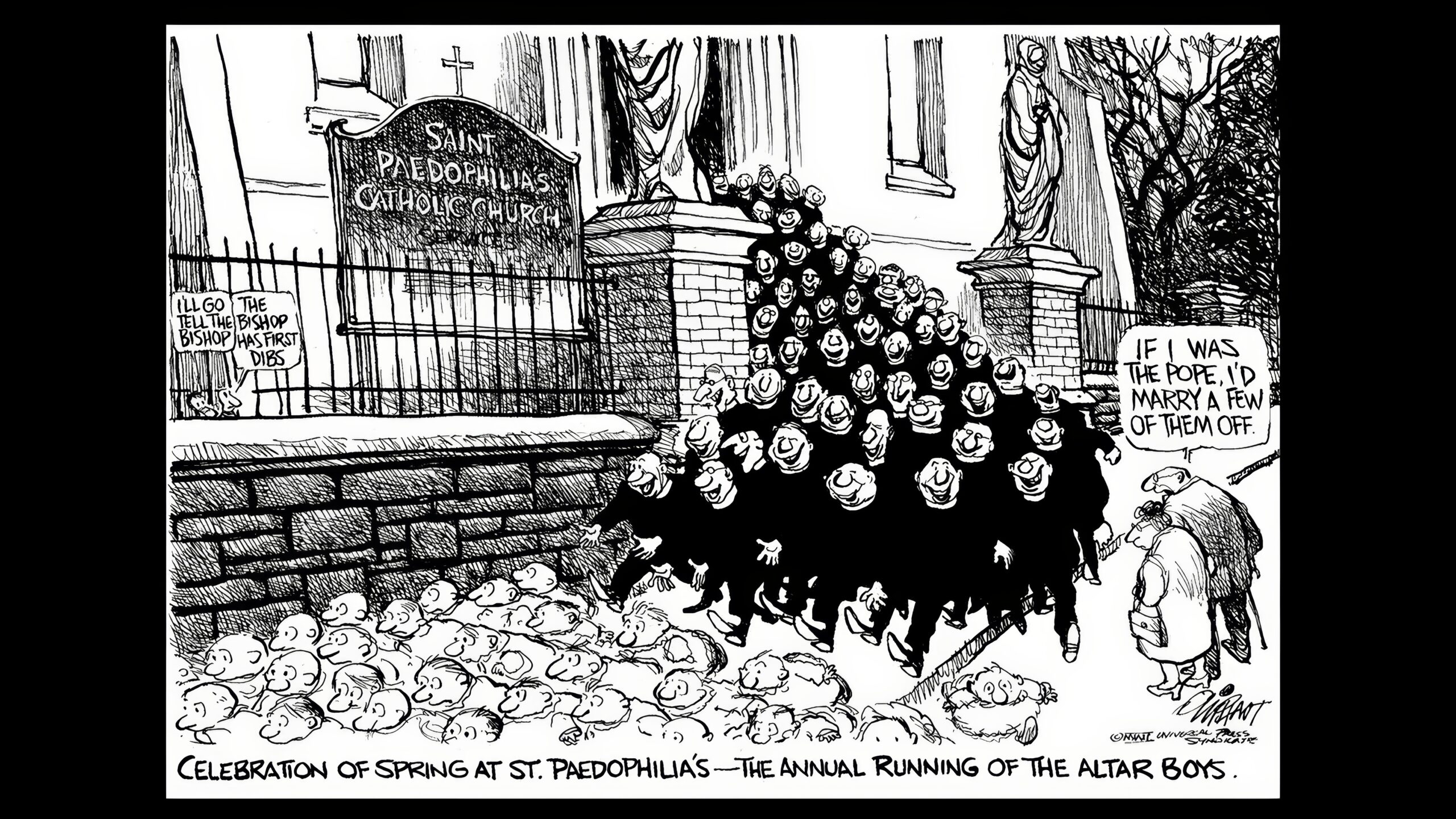At a time when the number of editorial cartooning jobs have been depleted at the biggest of papers — and during an era that screams for sharp political satire — it’s heartening to see the full biography of one of the greatest in the field, Patrick Oliphant, in the new documentary “A Savage Art.”
With a wicked and fearless wit, and an arresting and much-copied) original style, he seemed to define especially the dark era of Nixon and the presidents who followed and immediately preceded him. For all of his success in nailing the American era over five decades, though, Oliphant is an Australian, who moved to the states because of all of the endless material here.
One of his innovations is a tiny penguin named Punk who often commented or added a secondary wisecrack in the margins. An animated version of Punk introduces the various sections of Bill Banowsky’s film, carefully dissecting his life from his early days in Adelaide to his various wives, comments from his grown children, and other cartoonists.
Oliphant took over the editorial cartoonist’s job at the Denver Post vacated by the celebrated Paul Conrad in 1964. There he earned a Pulitzer for his cartooning, an achievement he was ambivalent about (he didn’t think it represented his best work).
He jumped to the epicenter of political life in 1975 with a staff position on the Washington Star, which ceased publication just five years later. By then he was syndicated widely enough to be independent, giving him wider freedom to do what he wanted. And he did a lot — over 10,000 cartoons over his career.
A friend of gonzo journalist Hunter S. Thompson, Oliphant’s brash, expressive style would have perfectly suited his dispatches but he was likely too busy (Ralph Steadman took up the task instead).
Oliphant gained respect from some of the Presidents he so skillfully skewered — at least the ones who had a sense of humor. The artist explains how he exaggerates certain traits of his targets or makes them up altogether. He identifies Gerald Ford with a constant bandaid on his head because of his occasional bumbling and pratfalls. But when Oliphant was at a social occasion with Ford, he painted a bandaid on his actual head.
Banowsky’s film gives context to Oliphant’s achievement by giving it historical context, tracing American editorial cartooning back to Nast and even further back to 19th century French cartoonist Honoré Daumier.
Like Daumier, Oliphant eventually took up sculpture, too, with similarly expressive but lesser known works of some of the same subjects.
The work is also compared to what serves something of the same purpose of editorial cartoons today — online memes.
Oliphant’s more savage cartoons in his career did not come without complaint — his “Running of the Altar Boys” at Saint Paedophilia’ Catholic Church opened him up for criticism, but made its point. Oliphant, now 90, retired a decade ago, but appears in retirement to comment on his career.
One wonders how he’d fare at a time of news deserts and kowtowing publishers. The case of one cartoonist fired for doing too many pokes at Trump, Rob Rogers of the Pittsburgh Post-Gazette, is mentioned, but one of the commentators of that issue, ironically, is Ann Telnaes, who herself more recently quit the Washington Post for spiking a cartoon of paper owner Jeff Bezos, among other billionaires, bowing to Trump.
That incident was too recent to be reflected in the film. But Oliphant’s fearlessness throughout his long career, so well presented in “A Savage Art” will live to inspire future cartoonists.
Select screenings of “A Savage Art” are being added, including Nov. 16 at the Michigan Theater in Ann Arbor.
